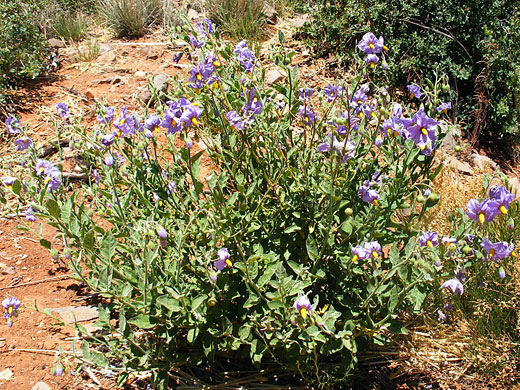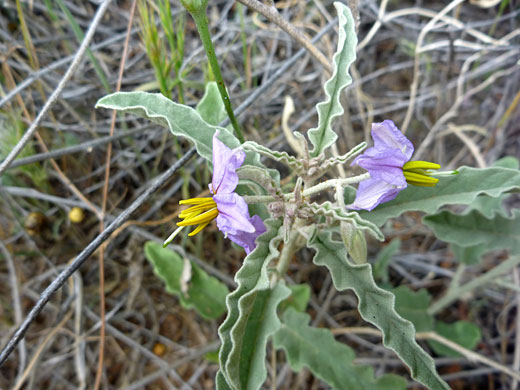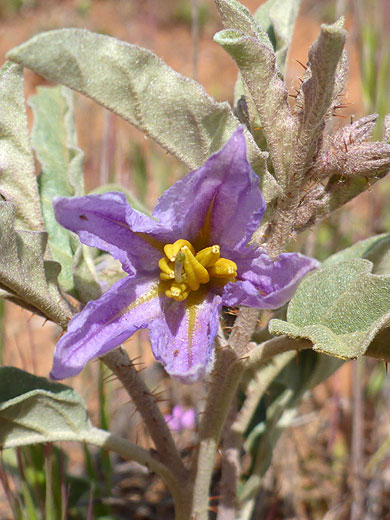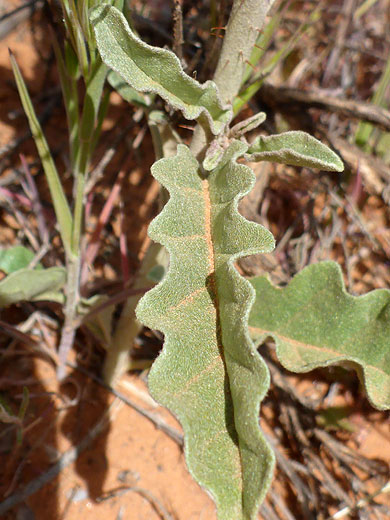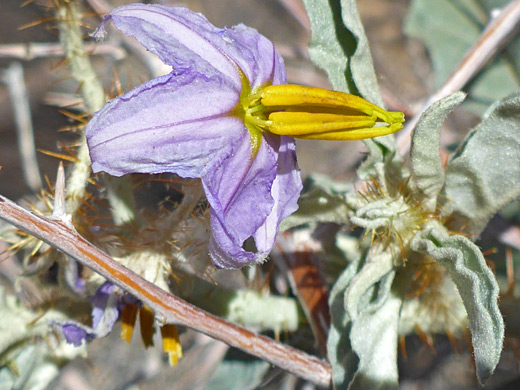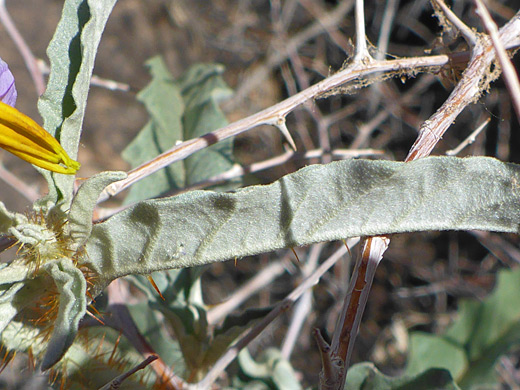Solanum Elaeagnifolium, White Horsenettle
Plants > Wildflowers > Solanaceae > Solanum Elaeagnifolium
Common names:
White horsenettle, silverleaf nightshade, bull nettle, olive-leaf nightshade, devil's tomato
Family:
Scientific name:
Solanum elaeagnifolium
Main flower color:
Range:
Most of west and south USA
Height:
Up to 3 feet
Habitat:
Roadsides, fields, sunny slopes
Leaves:
2 to 4 inches long, lanceolate, with wavy edges and hairy surfaces
Season:
April to September
Solanum elaeagnifolium is an easily recognizable plant on account of its unusual flowers, which consist of a star-shaped corolla with five lobes, arched backwards to reveal a central conical spike, formed of five long, fused yellow anthers (these may separate when mature) and a greenish-white pistil. Flowers grow in small clusters at the tip of each stem; the remainder bears large silvery-green leaves, at intervals (alternate arrangement) all the way to the base.
Despite its prettiness the plant is considered a noxious weed in some areas, as it spreads readily and is difficult to eradicate. The stems have a covering of short, soft hairs and also long brown prickles, these similar to a stinging nettle. The thin, wavy-edged leaves are often partially folded inwards along the axis, and they also have a few prickles, on the underside of the midrib.
Despite its prettiness the plant is considered a noxious weed in some areas, as it spreads readily and is difficult to eradicate. The stems have a covering of short, soft hairs and also long brown prickles, these similar to a stinging nettle. The thin, wavy-edged leaves are often partially folded inwards along the axis, and they also have a few prickles, on the underside of the midrib.
All Contents © Copyright The American Southwest | Comments and Questions | Contribute | Site Map


